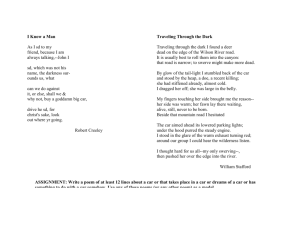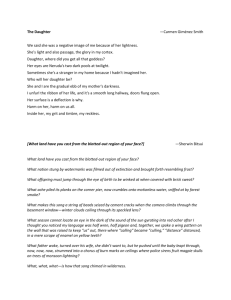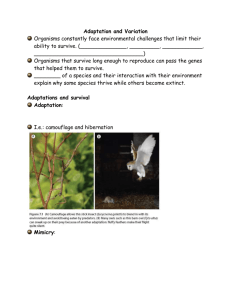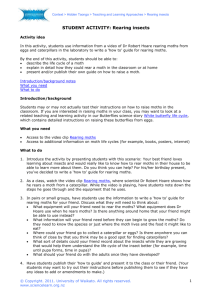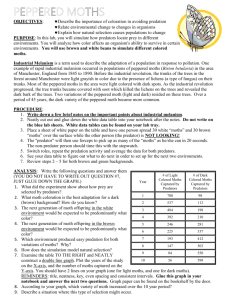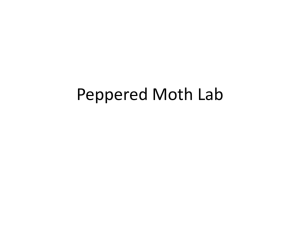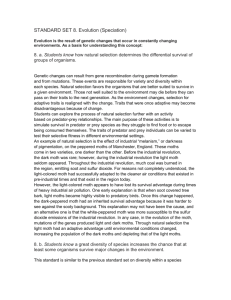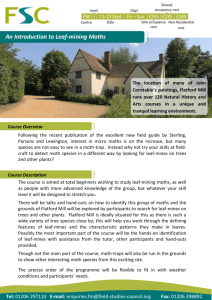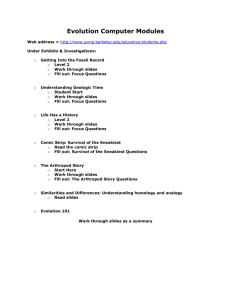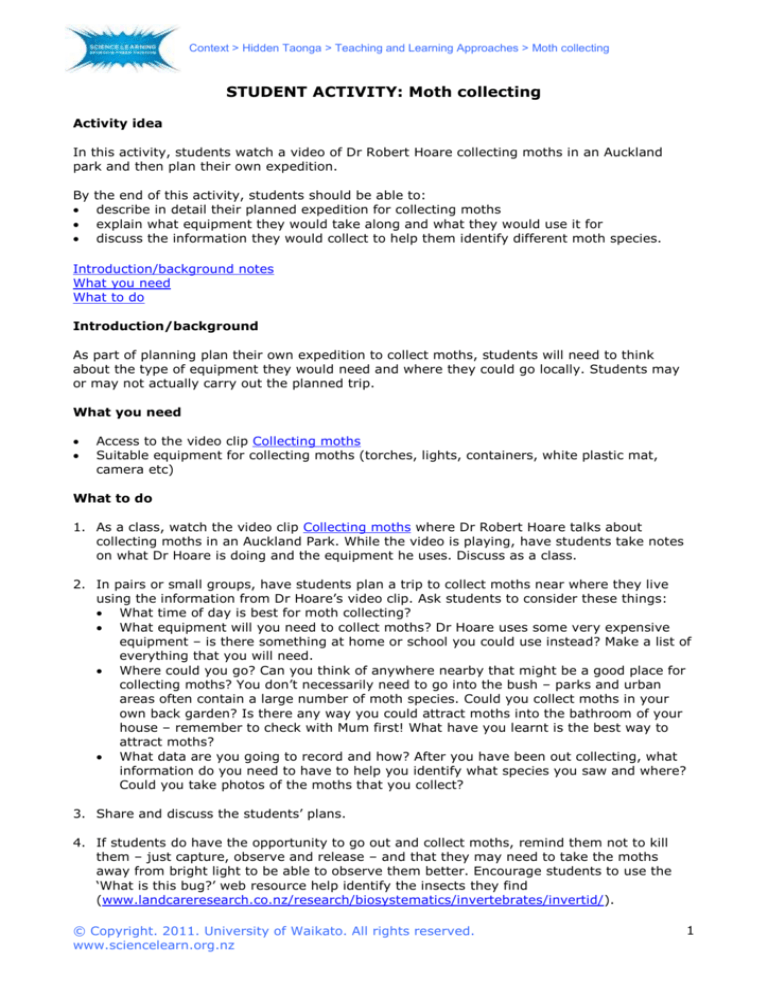
Context > Hidden Taonga > Teaching and Learning Approaches > Moth collecting
STUDENT ACTIVITY: Moth collecting
Activity idea
In this activity, students watch a video of Dr Robert Hoare collecting moths in an Auckland
park and then plan their own expedition.
By
the end of this activity, students should be able to:
describe in detail their planned expedition for collecting moths
explain what equipment they would take along and what they would use it for
discuss the information they would collect to help them identify different moth species.
Introduction/background notes
What you need
What to do
Introduction/background
As part of planning plan their own expedition to collect moths, students will need to think
about the type of equipment they would need and where they could go locally. Students may
or may not actually carry out the planned trip.
What you need
Access to the video clip Collecting moths
Suitable equipment for collecting moths (torches, lights, containers, white plastic mat,
camera etc)
What to do
1. As a class, watch the video clip Collecting moths where Dr Robert Hoare talks about
collecting moths in an Auckland Park. While the video is playing, have students take notes
on what Dr Hoare is doing and the equipment he uses. Discuss as a class.
2. In pairs or small groups, have students plan a trip to collect moths near where they live
using the information from Dr Hoare’s video clip. Ask students to consider these things:
What time of day is best for moth collecting?
What equipment will you need to collect moths? Dr Hoare uses some very expensive
equipment – is there something at home or school you could use instead? Make a list of
everything that you will need.
Where could you go? Can you think of anywhere nearby that might be a good place for
collecting moths? You don’t necessarily need to go into the bush – parks and urban
areas often contain a large number of moth species. Could you collect moths in your
own back garden? Is there any way you could attract moths into the bathroom of your
house – remember to check with Mum first! What have you learnt is the best way to
attract moths?
What data are you going to record and how? After you have been out collecting, what
information do you need to have to help you identify what species you saw and where?
Could you take photos of the moths that you collect?
3. Share and discuss the students’ plans.
4. If students do have the opportunity to go out and collect moths, remind them not to kill
them – just capture, observe and release – and that they may need to take the moths
away from bright light to be able to observe them better. Encourage students to use the
‘What is this bug?’ web resource help identify the insects they find
(www.landcareresearch.co.nz/research/biosystematics/invertebrates/invertid/).
© Copyright. 2011. University of Waikato. All rights reserved.
www.sciencelearn.org.nz
1


